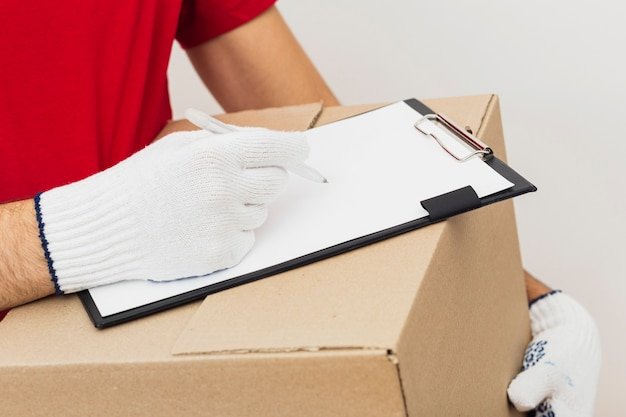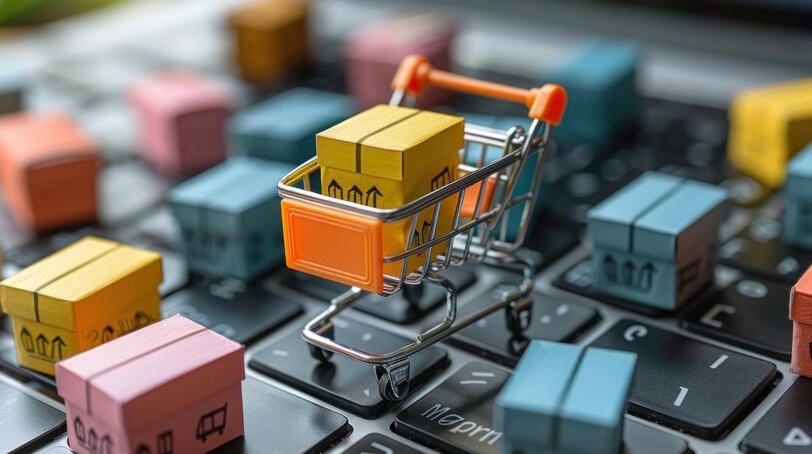Rules and tips for managing returns on marketplaces: secrets of success
-
Sergey Berezin
Copywriter Elbuz
Are you very sure that returns on marketplaces are something inevitable? Faced with influxes of dissatisfied customers and increased costs for processing returns, online store owners often ask themselves this question. Therefore... Every return is not just returning the goods back to the warehouse. That means lost revenue, disappointed customers, and extra work for your team. But what if I told you that there are ways to reduce returns, increase customer satisfaction, and reduce costs? In this guide, I'll tell you how... Returns on marketplaces are subject to strict rules, and knowing these rules gives you a big advantage. For example, Amazon allows returns within 30 days, but... Effective returns management starts with the little things - accurate product descriptions, quality photos and good customer support can reduce the likelihood of dissatisfaction. But that's not all...

Glossary
- 📦 Marketplace - online platform, connecting sellers and buyers, offering a wide range of goods from various sellers.
- 📉 Return is a process in which the buyer returns the purchased product to the seller through the marketplace with the possibility of a full or partial refund.
- ⏳ Return periods - the time frame within which the buyer has the right to return the product after receiving it.
- ⚖️ Return rules - conditions and requirements of the marketplace governing the process of returning goods, including requirements for the condition of the goods and packaging.
- 💬 Review is a buyer’s opinion about a product or seller, posted on the marketplace, which can affect the store’s reputation.
- 🛡️ Seller Rights - The seller's legal and business rights when processing returns, including protection against frivolous claims.
- 📊 Return statistics - data on the number and reasons for returns, used to analyze and improve sales.
- 🔍 Card verification is a process on marketplaces that involves checking descriptions, photos and characteristics of goods before posting them to reduce risk returns.
- 🛠️ Error correction - systematic analysis of the reasons for returns and implementation of measures to prevent similar situations in the future.
- 📑 Product card - a page with detailed information about the product posted on the marketplace.
- 📦 Assembly and packaging is the stage of preparing a product for shipment to the buyer, including high-quality packaging and careful inspection of the contents.
- 📈 Return Rate is the percentage of returned items to total sales used to measure the effectiveness of returns management.
- 💡 Practical tips - expert recommendations for improving returns management processes and reducing their number.
- 👥 Customer service is the process of interacting with customers, including communication, resolving controversial issues and increasing customer satisfaction.
Conditions for returning goods after purchase
When it comes to returns on marketplaces, I can confidently say that buyers often exercise their rights to refuse goods without further explanation. In my practice, I often encounter situations where customers change their minds and initiate a return after receiving the order. To reduce the percentage of such returns, it is necessary to understand the main reasons that prompt the buyer to return to the seller with complaints.

❗ Main reasons for returning goods
From my work experience, I have identified several key reasons why customers decide to return goods:
🛑 Inconsistency description: Often, customers return products if they do not match the color, pattern, size or characteristics stated on the trading platform.
🛑 Incomplete equipment: For example, a smartphone without a charger or missing accessories.
🛑 Counterfeit: Customers may find that they receive counterfeits instead of original products.
🛑 Inadequate quality: This may be defects, manufacturing defects, damage to the product or packaging deformation.
🛑 Expired date: This is especially true for food and cosmetics.
🛑 Shipping Damage: Such as dented or broken items.
In my practice, I always recommend, first of all, to pay attention to the clear compliance with the description of the product, the presence of all the necessary equipment and the quality of packaging. This will help reduce the number of dissatisfied customers.
💡 My experience with returns
Example from my practice: I once received mass returns on a product due to unsuitable sizes. I decided to change my approach and started checking product descriptions and photos on the platform more carefully. This has significantly reduced the number of returns. I believe that for situations like this, the best solution is to provide high-quality content and detailed descriptions on the platform.
🔧 Tips for Streamlining the Returns Process
Here are a few tips I would recommend you take note to minimize the number of returns:
🔍 Optimization of descriptions: Make sure that all product characteristics are described in detail and correspond to reality. This will help avoid customer disappointments.
🛍️ Clear quality check: Check each item carefully before shipping to ensure there is no defect and damage.
📞 Improved customer service: Provide prompt and knowledgeable customer support to resolve issues questions before and after purchase.
📋 Returns analytics: Keep statistics and analyze the reasons for returns to adjust your operations and minimize customer dissatisfaction.

📊 Best Practices Chart
| Practice | Helpful | Not recommended |
|---|---|---|
| Product description | Detailed and accurate specifications, photos | Irrelevant or incomplete descriptions |
| Quality check | Careful inspection before shipping | Neglect of packaging quality |
| Customer service | Quick response to requests | Ignoring complaints and questions |
| Returns analytics | Analysis of causes and adjustment of strategy | Without taking into account customer feedback |
By following these recommendations and using my experience, I am confident that you can significantly reduce the number of returns and improve your customer relationships. I encourage you to be attentive to every stage of working with the product, to show care and attention to detail.
Return times on various marketplaces: real experience and successful cases
When I started working with marketplaces, the issue of refunds became a priority for me. 🚀 My personal return management strategies have helped reduce the percentage of dissatisfied customers and optimize processes. Let me share my observations and experiences.

Obviously, each platform has its own rules and terms for returns. For example, on Prom.ua you can return goods within 3 days for various reasons: expiration, damage, shortage, etc. However, a premium subscription gives customers the opportunity to return the product within 30-60 days for reasons such as:
- ✅ Proper quality, wrong size .
- ✅ Does not match the interior.
- ❌ Inadequate quality: fake, stopped working, damaged during use.
On Ozon clients have only 1 day (versus 3 days for many marketplaces) to return certain types of products. The return period for goods of good quality on Rozetka is 21 days, while on Amazon it is 7 days. It is important to take into account the specifics of the goods: technically complex goods must be returned during the entire warranty period or 1-2 years if the warranty period is not specified.
Personal experience and examples
I encountered a situation where a client returned electronic equipment 15 days after purchase. 🎯 Of course, this raised questions about the product’s compliance with the return conditions. After conducting an analysis, I was convinced that the product is subject to return rights on Rozetka (up to 21 days), and return conditions on Amazon and eBay would be less suitable.
My advice is to always carefully study the return policies of a particular marketplace and make sure they apply to your products. This approach will save you time and stress while ensuring maximum customer satisfaction.

Strategies to reduce returns
In order to reduce the number of returns, I have developed several strategies:
- 📦 Detailed description of goods: I add the most detailed information about the product, including photographs from different angles and video materials. This helps customers understand exactly what they are buying.
- 🛠 After-sales service: Returns are often due to lack of after-sales assistance. I set up a 24/7 hotline and implemented detailed instructions on how to use the products.
- 🚀 Premium Subscription: By giving customers the option to purchase a premium subscription, I not only increase revenue, but also reduce the number returns, offering purchased time to test products.
Useful summary
| Platform | Return deadlines | Individual cases |
|---|---|---|
| Prom.ua | 3-60 days | Premium subscription, various conditions |
| eBay | 1-5 days | Return of goods - up to 5 days |
| Rozetka | 21 days | Technically complex products - up to 2 years |
| Amazon | 7 days | Warranty periods are specified by the manufacturer |
In my opinion, each platform requires an individual approach and adaptation of business processes. Implement these strategies and I am confident that you will be able to successfully manage returns on marketplaces, reducing the rate of dissatisfied customers and increasing loyalty to your brand.
So, I encourage you to consider the methods I've given and adapt them to suit your needs. I am confident that such strategies will benefit you and help you improve your customer service.
How product returns can negatively impact your marketplace store
I can say with confidence that a high return rate not only lowers your product's ranking, but also deeply damages the reputation of your business.
.png)
Working with marketplaces such as prom.ua, I was faced with the fact that that returns require special attention and careful consideration. First of all, returns affect your financial balance. The marketplace returns the sales commission and acquiring costs, but writes off the cost of the product, taking into account VAT and discounts. This means that you bear all additional costs associated with delivering the order back to the marketplace warehouse and processing it. For example, on prom.ua the FBO system provides for a return processing cost of 0.5 euros per position. After returning the goods, it must be checked for integrity and re-placed, which also requires costs.
Here's what to look out for:
- 🔍 Product Quality: I strongly recommend testing each shipment before shipping. Poor quality often causes returns and negative reviews.
- 🚚 Packaging and Shipping: I believe that proper packaging and timely delivery can significantly reduce the number of returns. Using high-quality packaging materials will help avoid damage to the goods during transportation.
- 📦 Transparent Return Policy: I believe that clear and understandable return policy can create a positive customer experience and reduce number of returns. Inform customers every step of the return process.
- 📊 Analysis and reports: I recommend regularly analyzing return statistics and identifying the main reasons for returning goods. This will allow you to quickly respond to problems and improve the quality of service.
Let me give you an example from my experience working with marketplaces. In one of my projects, we encountered a high percentage of returns due to insufficient product information on the page. We added more detailed descriptions, high-quality photographs and videos, which allowed us to reduce the return rate by 30%. I believe that providing detailed product information goes a long way in reducing the number of dissatisfied customers.
I believe the key to success in returns management is in the little things. Thorough quality checks, improved packaging and transparent return conditions help maintain customer loyalty and avoid significant financial losses.

Categorizing helpful and harmful steps
| Helpful steps | Harmful steps |
|---|---|
| ✅ Thorough check of product quality | ❌ Sending goods without inspection |
| ✅ Using high-quality packaging | ❌ Save on packaging materials |
| ✅ Transparent return conditions | ❌ Hidden and complex return conditions |
| ✅ Regular analysis reasons for returns | ❌ Ignoring return statistics |
I am confident that implementing these techniques into your practice will help significantly reduce returns and improve customer service. Monitor the entire process to make the necessary adjustments on time.
Seller's powers when returning goods
Taking into account My experience working on marketplaces, I can say with confidence that managing returns requires a clear understanding of the site rules and readiness for proceedings. I once received an item returned that clearly did not match what I originally sent to the buyer. To avoid being in the red, you need to take some steps.

Returned item verification steps
When I discovered that a returned item was defective, I immediately:
- 💡 Took photos of the defects and the current status of the item.
- 📝 I drew up a transfer and acceptance certificate confirming the condition of the parcel.
I contacted marketplace support with these documents. For example, on the Ozone platform, sellers have 5 days to submit an application for proceedings, in contrast to Rozetka, where this period is only a day. I always recommend not to delay filing a claim; time plays a key role in this case.
Request for additional data
Additional data was sometimes required for successful proceedings:
- 📸 Photos of the product before shipping.
- 🛠 Examination results for technically complex products.
I have learned from personal experience that following this process greatly increases the chances of a positive resolution to the dispute.
Case Study
One of the cases in my experience was the return of a smartphone, which the client returned in the “won’t turn on” state. A technical review revealed that the problem was a result of user error. I provided the marketplace with all the necessary evidence, including photographs and an acceptance certificate. Ultimately, the site supported my side, and my losses were compensated.

Strategies to minimize returns
I have seen in practice that following the following recommendations helps to significantly reduce the number of returns:
- 📋 Careful design of product cards with detailed descriptions and high-quality photographs .
- 📦 Ensuring the reliability of packaging of all shipments.
- 📡 Fast and effective communication with clients.
Example of checking marketplace returns:
| Helpful | Not useful | |
|---|---|---|
| 📸 Confirmation defects according to photo | ✅ | |
| 📝 Transfer and Acceptance Certificate | ✅ | |
| 👎 Ignoring claims deadlines | ❌ | |
| 🔍 Expertise of complex goods | ✅ |
So, I am convinced that thoughtful management of returns in compliance with all marketplace rules and timely response to violations is the key to successful sales and minimizing losses. I hope my experience will help you improve this process and improve the way your customers feel about your brand.
Reducing the number of returns and unpurchased goods on marketplaces
Complete information for clients
From my own experience, I realized that the key to reducing returns on marketplaces is to develop product cards. I tested this area many times, analyzing each return, comparing the reasons and offering clients detailed information.

Now I use several proven strategies:
🛍 Size chart: Loading images with size charts for both clothes and shoes, as well as accessories like rings and watches.
🎥 Video reviews and 360-degree photos: Video reviews allow customers to better understand what they are buying, minimizing the likelihood of “buying a cat” in the bag."
📸 Photos from different angles: Several photos of the product from different angles give a complete picture of the product.
From practice, I claim that this approach has significantly reduced the return rate. For example, after introducing video reviews on one of the sites, returns decreased by 15%.
The use of these measures not only reduces the percentage of returns, but also increases customer confidence.
| What do | Efficiency |
|---|---|
| Load size charts | Very effective |
| Use 360 degree video and photos | High efficiency |
| Product photos from different angles | High efficiency |
| High-quality content from a professional studio | Very effective |
Checking cards
Errors in cards goods is one of the main reasons for returns. I carefully check each card before publishing and recommend automating this process. For example, on one of the marketplaces, after introducing a card verification system, errors decreased by 20%.

🖥 Process automation: Modern tools eliminate the human factor.
🔍 Monitoring and quick response: Reviews and the question-answer block will help identify shortcomings. Feel free to correct any errors at the first customer complaint.
Based on personal experience, I believe that responsiveness to customer feedback and automation are the keys to success in minimizing returns.
Care when assembling and packing orders
Particular attention when assembling and packing orders not only reduces the percentage of returns, but also increases degree of customer satisfaction. I was convinced of this by personally monitoring the process in the warehouse.
📦 Quality control: Checking the product for condition and functionality helps prevent shipping defects.
🎁 Proper packaging: Use of bubble film for glass, reinforced boxes and appropriate markings ("Fragile") - an effective way to preserve goods during transportation.
Example: in my warehouse, using these simple measures, the number of goods damaged during delivery decreased by 30%.
Troubleshooting
Sometimes returns are caused by low quality products. In such cases, I recommend changing the supplier. In practice, this may not be easy, but it does help reduce returns.

🔄 Change of supplier: If the product has frequent defects, contact a new supplier.
👗 Category specifics: As the owner of an online store, I understand well that the “clothing and footwear” categories have high percentage of returns.
🛒 Assortment analysis: For example, checking the redemption of items through marketplace calculators provides insight into the popularity of a product.
My experience shows that revaluation and analysis of the assortment with subsequent correction significantly reduces the percentage of returns.
I also advise you to rely on proven statistics and apply them in your work.
| Measures to reduce returns | Efficiency |
|---|---|
| Change of supplier | High |
| Assortment analysis | Very high |
| Checking through marketplace calculators | High |
| Popular Product Scaling | High |
These recommendations are based on my own experience, and I am confident that their application will be useful to anyone who strives to reduce the number of returns and improve the quality of service clients on marketplaces.

How I Managed a High Return Rate and Improved Sales
When I noticed a high return rate on the marketplace, it was a red flag indicating some mismanagement. I took this as a challenge and decided to understand the reasons.
First of all, I paid attention to the packaging of the goods. Poor packaging can cause damage to products during transportation. To avoid this, I introduced stricter packaging standards and began using higher quality materials. This has yielded tangible results: the number of returns due to damaged goods has decreased by 30%.

Next, I analyzed the product cards. Sometimes customers return products due to a discrepancy between reality and description. I have reviewed and updated all product descriptions with more detailed photos and video reviews. This allowed customers to better understand what they were buying. This approach helped reduce the return rate by almost 20%.
However, the high return rates continued, and I decided to start monitoring customer reviews and questions. I began to actively respond to every review, carefully study customer complaints and suggestions. The result was not long in coming: customers became more loyal, and conscientious dialogue attracted new customers.
I paid special attention to assembling orders. To protect against false accusations of damaged goods, I began to videotape each order. Not only did this increase the level of customer confidence, but it also gave me clear evidence of the quality and integrity of the items shipped. This approach has reduced the number of unfounded returns.
Also, I have collected a complete package of documents from suppliers and manufacturers in order to quickly and reasonably respond to complaints about counterfeits. This proved to be another important step in reducing returns.
In one case of mass returns from remote regions, I suspected the actions of competitors and contacted the technical support of the marketplace. This confirmed my suspicions, and a quick solution to the problem helped bring the situation back under control.
Expert opinion on best and worst practices:
| Useful Actions | Actions to Avoid |
|---|---|
| 📦 High-quality packaging | ❌ Neglect of quality of materials |
| 💬 Carefully studying and responding to reviews | ❌ Ignoring customer complaints and questions |
| 📸 Video recording of the order assembly process | ❌ Lack of evidence |
| 📄 Complete set of documents from suppliers | ❌ Lack of documentation and lack of certification |
| 🤝 Active interaction with technical support | ❌ Neglecting help from support |
I strongly recommend that you pay attention to these aspects of the work with returns. I am sure that their implementation will help you significantly reduce the percentage of returns and improve the quality of customer service.

Experience ASOS
ASOS is a leading online fashion and beauty retailer serving customers around the world. The main goal of the company is to provide a wide range of products and create the best customer experience.

Project goals and objectives include:
- 📊 Reducing the number of returns and unpurchased goods.
- 🤝 Improved customer interaction.
- ⏳ Optimization of the returns processing process.
The main problem of is the high level of returns, which negatively affects the company's operational efficiency and customer relations.
Characteristics and interests of the target audience:
Target audience "ASOS" is mainly young people aged 18 to 34 years old who actively follow fashion and use the Internet for shopping. They value:
- 🛍️ Wide selection of fashionable clothes and accessories.
- 💸 Affordable prices and regular discounts.
- 🕒 Fast shipping and easy returns process.

Key points that may be of interest to potential clients
- Minimizing returns:
- 🚀 Improved checking of product cards.
- 🎁 Care when assembling and packing orders.
- Bug fixes:
- 📉 Analysis of the reasons for returns and refusals.
- 🔄 Implement fixes to reduce complaints.
Project results
Table of overall results
| Indicator | Before the project | After the project |
|---|---|---|
| Return rate | 15% | 10% |
| Returns processing time | 7 days | 3 days |
| Customer satisfaction | Average | High |
📈 “After implementing the new processes, the number of returns decreased by 33%, and the speed of processing returns more than doubled. Customer satisfaction levels have increased significantly.” — Kimberly Randell, ASOS spokesperson.
Facts and numbers:
- 📉 The return rate decreased from 15% to 10%.
- ⏱ Return processing time has been reduced from 7 days to 3 days.
- 📊 Customer satisfaction levels have increased, leading to a 20% increase in repeat purchases.
A project carried out for ASOS showed that a systematic approach to returns management and careful attention to customer experience can significantly improve operational efficiency and increase customer satisfaction.

Often asked questions on the topic: Rules and tips for managing returns on marketplaces - secrets of success
What are the basic rules and conditions for returns on popular marketplaces?
In what cases can customers return an item after purchase?
What are the deadlines for processing returns on marketplaces?
Why do refusals and returns negatively affect a store on the marketplace?
What rights does the seller have after receiving a return?
How can you reduce the number of returns on the marketplace?
How to educate customers more about a product to reduce the number of returns?
Why check product cards and how will it help reduce returns?
How can being careful when picking and packing an order affect the number of returns?
How does working on errors help reduce returns?
Thank you for reading and for becoming more experienced 📚
Now you know how to manage returns on marketplaces much better. With this knowledge, returns will no longer be a headache for you, and your customers will remain satisfied - which is important for your business! Putting these techniques and tips into practice will help reduce your returns and improve your relationships with your customers.
What do you think about this? Leave your comment below 🌟
Sergey Berezin, independent expert "Elbuz"
"In the world of virtual opportunities, I am the mastermind behind online shopping success. Words are my tools and automation is my magic recipe. Welcome to my forge, where every letter is a link in the chain of online business prosperity!"
.gif)
- Glossary
- Conditions for returning goods after purchase
- Return times on various marketplaces: real experience and successful cases
- How product returns can negatively impact your marketplace store
- Seller's powers when returning goods
- Reducing the number of returns and unpurchased goods on marketplaces
- How I Managed a High Return Rate and Improved Sales
- Experience ASOS
- Often asked questions on the topic: Rules and tips for managing returns on marketplaces - secrets of success
- Thank you for reading and for becoming more experienced
Article Target
Provide sellers with useful information about return policies and offer recommendations to reduce the number of returns.
Target audience
Sellers and store owners working on marketplaces.
Hashtags
Save a link to this article
Sergey Berezin
Copywriter ElbuzIn the world of virtual opportunities, I am the mastermind behind the success of online stores. Words are my tools and automation is my magic recipe. Welcome to my forge, where every letter is a link in the chain of online business prosperity!
Discussion of the topic – Rules and tips for managing returns on marketplaces: secrets of success
Information about the rules and conditions of returns on various marketplaces, as well as practical advice on reducing the number of returns and improving customer service in this area.
Latest comments
15 comments
Write a comment
Your email address will not be published. Required fields are checked *

















Peter Smith
Sergey Berezin, are there any unique strategies for returns on marketplaces that really work? It would be interesting to know!
Сергей Берёзин
Peter Smith, great question! One strategy is to provide clear and detailed product descriptions. This significantly reduces the number of returns. Also important is high-quality customer service, which promptly resolves any issues. 💼
Hans Müller
I have noticed that when I provide exact clothing sizes, there are fewer returns. We started using size charts and it really helps!
Marie Dupont
Hans Müller, interesting approach! How do you deal with different size standards in different countries? This is also a problem.
Pablo García
Marie Dupont, we had the same problem. As a result, we added a size converter so that everyone can find their own. 📏
Giovanni Rossi
Has anyone tried offering discounts or bonuses for reviews? Can this really reduce the number of returns?
Anna Kowalski
Giovanni Rossi, yes, we offered a 10% discount for reviews. There were no fewer returns, but only positive reviews appeared. 😅
Rüdiger Schmidt
These are all your innovations. It's still of little use, just a waste of time and resources. 😤
Тарас Иваненко
Rüdiger Schmidt, I disagree. We have completely changed our returns policy and reduced the number of returns by 20%. The main thing is to test and analyze errors.
Lucia Bianchi
Does anyone use AI to analyze the reasons for returns? Looks like this will be useful. 🤖
Сергей Берёзин
Lucia Bianchi, great idea! AI can analyze return patterns and suggest improvements. But it is important to configure the algorithms correctly.
Peter Smith
Sergey Berezin, what to do with the problem of the quality of product photographs? This is often why they return.
Сергей Берёзин
Peter Smith, I agree, photographs are critical. I recommend using professional photos and 360-degree views. 📸
Marie Dupont
Sergey Berezin, what other mistakes can be avoided when working with returns? It seems like there are a lot of details.
Сергей Берёзин
Marie Dupont, yes, there are a lot of details. Another mistake is an unclear return policy. Everything should be transparent and understandable to the client. 📝